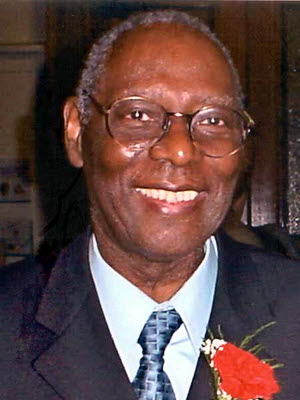 Two judges, a state lottery sales representative, a former mayor, a former vice mayor, and a state representative all lost their father recently. William L. Mallory, Sr., died on December 10. The one time high school dropout had an extremely successful career in politics and was obviously pretty good at parenting, too. I met him once.
Two judges, a state lottery sales representative, a former mayor, a former vice mayor, and a state representative all lost their father recently. William L. Mallory, Sr., died on December 10. The one time high school dropout had an extremely successful career in politics and was obviously pretty good at parenting, too. I met him once.
It was Reds Opening Day in 2004. It was also my birthday. As is my habit, I headed downtown for the parade. My friend John came down later to meet me and go to the game. I don’t remember much about the game but know that the Reds lost it to the Chicago Cubs. Afterwards, we found ourselves in La Normandie, the classy but easy going tavern and restaurant beneath the perennial 5-star Maisonette.
We sat at the bar and before long were engaged in conversation with a well dressed fellow sitting just around the bar’s corner. That fellow was, of course, William Mallory. John had met him once at a fundraiser but I had no idea who he was. Even after learning his name and realizing or being told that he had been a state representative, I was ignorant of the full stature of the man I was talking with. I did not and, perhaps to my shame, still do not, follow state politics very closely. Even if I connected the name with the Ohio congress without being told (which may not be the case) that was the extent of my recognition. I see that as a good thing. While it is unlikely that knowing I was chatting with Ohio’s longest serving House of Representatives Majority Leader and the first African-American to hold that position would have turned me into an overawed blatherer, it probably would have made things a lot less natural and casual.
Although I’m not sure it was our intent when we entered, at some point John decided he should buy me dinner for my birthday and I thought that a fine idea. He asked Mr. Mallory to join us and the former congressman graciously accepted. The three of us moved to a booth.
I recall nothing specific about our conversation. I do recall that it was friendly and easy flowing. If there was anything at all political in the conversation, it was light. I’m sure we talked about the Reds and we probably talked about some current events and our families and jobs. We neither solved problems nor created any. High-caliber small-talk seems a pretty good description. I can’t recall whether Mr. Mallory had walked downtown or ridden a Metro bus. It could easily have been either. I would later learn that, as co-chairman of the Citizen’s Transportation Committee, he had been instrumental in the formation of the publicly owned Metro. He accepted our offer of a ride home and, possibly because mine was the closer of our two cars, I was chosen as “chauffeur”. We chatted easily as we walked to my car. The red Corvette convertible I was driving was not the most dignified of vehicles but it did not bother the congressman in the slightest. He settled into the seat and directed me to his home with easy to follow instructions. Once there, he thanked me and headed into the house.
It was the next morning before the internet let me know just who it was that John had bought dinner for and I had driven home. A newspaper article announcing his death and a 2008 Greatest Living Cincinnatians citation contain what are no doubt incomplete lists of his accomplishments and awards. A wonderful StoryCore interview is here. Southwest Ohio lost a great and caring man this month but he left behind a generation of Mallorys well prepared to at least try filling the gap. The memory of that nearly ten year old meeting is one that I am truly fond of and thankful for.
 In addition to an earlier private service for the family, a public Celebration of Life took place in the rotunda of Union Terminal (a.k.a. Cincinnati Museum Center) on Sunday, December 22. A report of the celebration is here. This building and Mr. Mallory were very important to each other. It was a prominent landmark in the west end neighborhood of his youth and a place where he worked shining shoes and busing tables among other things. When demolition threatened in the 1980s, he played a key role in securing state funding that helped enable the conversion to the museum center and actually delivered the multi-million dollar check to the museum himself. “I often reflect on a shoe shine boy becoming the delivery man for $8 million”, he has said. That’s just one of many things about William L. Mallory, Sr., that’s worth reflecting on.
In addition to an earlier private service for the family, a public Celebration of Life took place in the rotunda of Union Terminal (a.k.a. Cincinnati Museum Center) on Sunday, December 22. A report of the celebration is here. This building and Mr. Mallory were very important to each other. It was a prominent landmark in the west end neighborhood of his youth and a place where he worked shining shoes and busing tables among other things. When demolition threatened in the 1980s, he played a key role in securing state funding that helped enable the conversion to the museum center and actually delivered the multi-million dollar check to the museum himself. “I often reflect on a shoe shine boy becoming the delivery man for $8 million”, he has said. That’s just one of many things about William L. Mallory, Sr., that’s worth reflecting on.

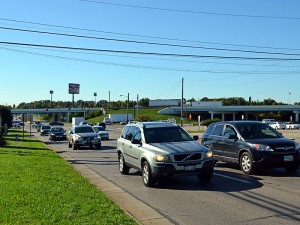







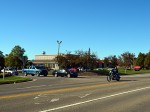
 I subscribe to more than seventy blogs. Most are very quiet and some are probably dead. Only a half dozen or so actually publish much of anything on a regular basis. When I’m at home, leisurely sipping coffee, keeping up with them is simple and not a problem. When I’m traveling, it is simply not possible,
I subscribe to more than seventy blogs. Most are very quiet and some are probably dead. Only a half dozen or so actually publish much of anything on a regular basis. When I’m at home, leisurely sipping coffee, keeping up with them is simple and not a problem. When I’m traveling, it is simply not possible,

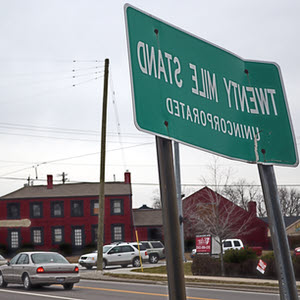 Available blog statistics kind of suck. At least they do for WordPress Jetpack statistics on a self hosted blog that is only a portion of a website. One issue is that the most popular “page” is almost certain to be something called “Home page / Archives” which is a swirling mix of the multiple pages displayed at the blog’s root or the multiple pages that satisfy a search. I have AWStats generated numbers for the entire site, including the blog, but those have some problems, too. For one thing, counts include all of the individual pages appearing in the previously mentioned “Home page / Archives” many of which are not actually viewed. For another, AWStats numbers include blog page references that I’ve made myself in creating and maintaining the blog. I try to keep these to a minimum but eliminating them completely is not possible. In the end, though, I do believe the relationship of the numbers is meaningful even if the numbers themselves aren’t all that precise. So here are the top five blog and non-blog entries and I’ll follow the lists with some overall numbers.
Available blog statistics kind of suck. At least they do for WordPress Jetpack statistics on a self hosted blog that is only a portion of a website. One issue is that the most popular “page” is almost certain to be something called “Home page / Archives” which is a swirling mix of the multiple pages displayed at the blog’s root or the multiple pages that satisfy a search. I have AWStats generated numbers for the entire site, including the blog, but those have some problems, too. For one thing, counts include all of the individual pages appearing in the previously mentioned “Home page / Archives” many of which are not actually viewed. For another, AWStats numbers include blog page references that I’ve made myself in creating and maintaining the blog. I try to keep these to a minimum but eliminating them completely is not possible. In the end, though, I do believe the relationship of the numbers is meaningful even if the numbers themselves aren’t all that precise. So here are the top five blog and non-blog entries and I’ll follow the lists with some overall numbers. When I started this blog I committed to a post every Sunday. I’m currently on a road trip and when I left home I knew that maintaining the trip journal would take most of my time but that I would have to fill at least three Sundays before the trip ended. I had two posts ready and a couple more that were maybe 75% done. I hoped to find time to complete one of those before week three came around. What was I thinking? Not only didn’t I finish another blog post, I’ve been as many as three days behind in maintaining the journal. I’m currently about two days behind. So this is all I got. It is, technically, a blog post so I have, in a weasely sort of way, kept my commitment. But it is entirely content free and represents not success but surrender.
When I started this blog I committed to a post every Sunday. I’m currently on a road trip and when I left home I knew that maintaining the trip journal would take most of my time but that I would have to fill at least three Sundays before the trip ended. I had two posts ready and a couple more that were maybe 75% done. I hoped to find time to complete one of those before week three came around. What was I thinking? Not only didn’t I finish another blog post, I’ve been as many as three days behind in maintaining the journal. I’m currently about two days behind. So this is all I got. It is, technically, a blog post so I have, in a weasely sort of way, kept my commitment. But it is entirely content free and represents not success but surrender. A 2005 survey reported that people were spending an average of 2.8 minutes a day deleting email spam. Whether that was for the entire US population, the 75% of internet users they reported receiving spam messages daily, or some other group is unclear. Regardless of who was doing the deleting, the survey went on to state that the resulting loss in productivity was costing $21.6 billion dollars a year. My search failed to turn up more recent statistics although I imagine they’re out there. Or maybe not. Maybe the statisticians are now too busy deleting spam to conduct surveys.
A 2005 survey reported that people were spending an average of 2.8 minutes a day deleting email spam. Whether that was for the entire US population, the 75% of internet users they reported receiving spam messages daily, or some other group is unclear. Regardless of who was doing the deleting, the survey went on to state that the resulting loss in productivity was costing $21.6 billion dollars a year. My search failed to turn up more recent statistics although I imagine they’re out there. Or maybe not. Maybe the statisticians are now too busy deleting spam to conduct surveys. It was the pending “loss” of these comments that prompted this post. Most are just aggravating but a few are hilarious. They are almost always filled with praise in hopes, I assume, of winning my approval but the typical message is such a jumble that I can’t imagine even the most desperate ego succumbing. Like newspaper horoscopes, the messages never mention anything specific about the post they are supposedly responding to. The majority appear to be from Russia, Eastern Europe, and Brazil. There have been a few bulk posts. A bunch once showed up pushing a particular brand of shoe and there were a couple bursts touting some dress label. At one point I received quite a few from someone in Brazil saying they would “adore to reveal” something (a Portuguese word I’ve yet to find a translation for) “in web cam”.
It was the pending “loss” of these comments that prompted this post. Most are just aggravating but a few are hilarious. They are almost always filled with praise in hopes, I assume, of winning my approval but the typical message is such a jumble that I can’t imagine even the most desperate ego succumbing. Like newspaper horoscopes, the messages never mention anything specific about the post they are supposedly responding to. The majority appear to be from Russia, Eastern Europe, and Brazil. There have been a few bulk posts. A bunch once showed up pushing a particular brand of shoe and there were a couple bursts touting some dress label. At one point I received quite a few from someone in Brazil saying they would “adore to reveal” something (a Portuguese word I’ve yet to find a translation for) “in web cam”.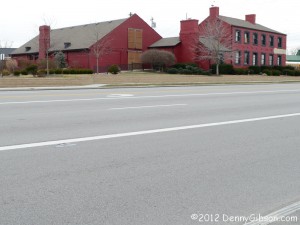


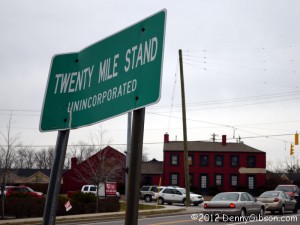
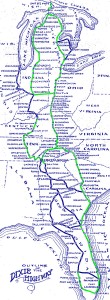
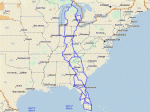
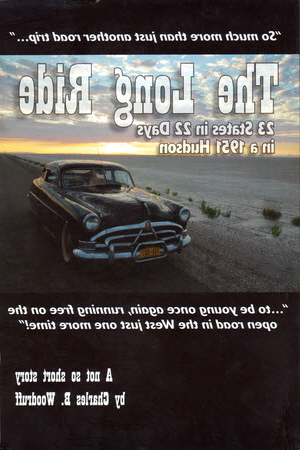 So now that I’ve explained why I don’t like to post viewer stats, here are some hidden in a paragraph for folks who bother to read outside the bullet list. For 2011, the entire website had 43,213 visits with 227,060 page views. The most popular page was the
So now that I’ve explained why I don’t like to post viewer stats, here are some hidden in a paragraph for folks who bother to read outside the bullet list. For 2011, the entire website had 43,213 visits with 227,060 page views. The most popular page was the